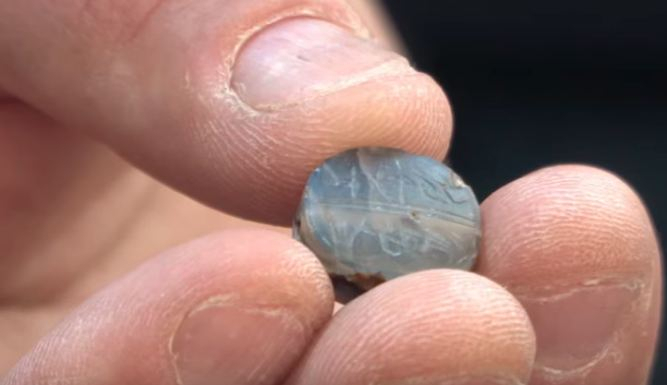As per the Hebrew Bible, the name Nathan-Melech, which means 'King's gift,' was given to a servant of King Josiah during the Book of Kings who is believed to have lived near the Temple of Jerusalem.
But until earlier this year there was no proof of this man's existence. However, as per the experts, a newly found stamp seal in the City of David, Jerusalem may shed light into the mysterious man's life.
Dr Anat Mendel-Geberovich from The Hebrew University said that since the servant of the king was not mentioned by his last name, it can be understood that he was pretty famous in Jerusalem during ancient days, mid-seventh century BC. The name was also mentioned in the Bible but only once. But it was mentioned in the second book of Kings, where he is addressed as an official of King Josiah.

Nathan-Melech mystery
As reported, Dr Anat said "In a story about the famous religious reforms of Josiah, who removed the horses that the former kings had dedicated to the Sun. The one million dollar question, it am I holding in my hand the bulla (Stamp Seal) of the same Nathan-Melech that was in the Bible?" and added that even though giving a conclusive statement is difficult, "what I can say is there is an overlap in three things – first the name which is rare, second the period we're talking about and third is the fact that we have the title, so he was close to the King."
Dr Yiftah Shalev, from the Israel Antiquities Authority, gave a description of a very large historic structure, which was built somewhere in the seventh or eighth century BC and was destroyed in a big fire, probably in 586BC during the Babylonian conquest of Jerusalem. However, he claimed that the remains of the structure may prove how the stamp may have got buried beneath the rubble.
"The size of this structure indicates that this house was not a regular dwelling, it was probably the house of a very rich person, maybe an officer, or someone from the administration of Jerusalem," said Dr Yiftah, as quoted by Expiress.co.uk.

Discovery of second seal stamp
After the discovery of the second stamp seal, bearing the name Ikar Ben Matanyahu, archaeologists thought that this individual is referred as the king of Judah, who was appointed by Babylonians and changed his name from Meranyahu to Zedekiah.
Professor Yuval Gadot, from the Department of archaeology, Tel Aviv University revealed that the seal with Hebrew letters was found at an archaeological site in Givati Parking Lot after Israel Antiquities authorities and Tel Aviv University in the National Park of the City of David jointly conducted an excavation program. This 2600-year-old stamp seal was found on the floor in the destruction of Jerusalem in 586BC and it is not surprising to find this artefact in this location, the professor added.









